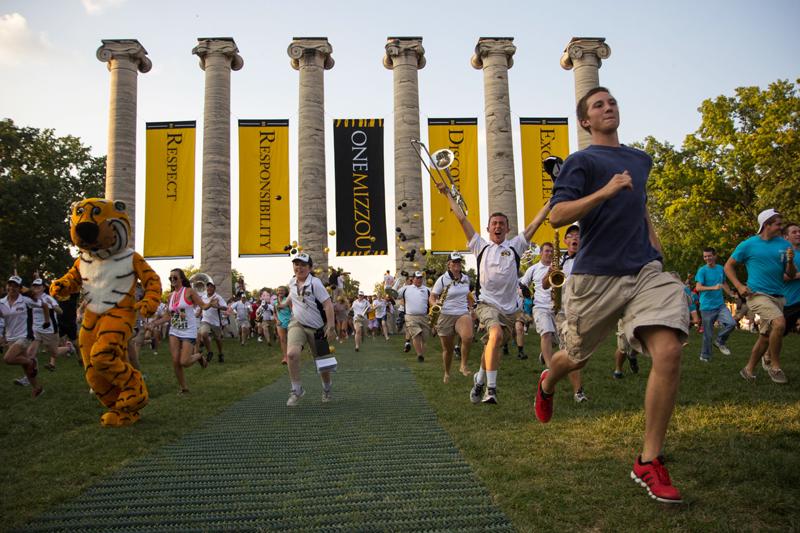
MU students find themselves among the most diverse and one of the largest student bodies the school has seen.
The number of in-state students enrolled at MU dropped, while the number of out-of-state students rose, MU spokesman Christian Basi said.
While the total enrollment of 34,111 students does not quite match last year’s 34,748, Basi said these numbers are still tentative. An official census will be taken somewhere around twenty days after the beginning of the school year, which will include a breakdown of majors and students enrolled in specific schools, Basi said.
“Usually those numbers change,” Basi said. “We’ll have folks who say, ‘Oh, I want to go to school,’ two to three weeks after the first day. Last year, enrollment rose by 400 people just from the first day to the official number count.”
This increase in out-of-state students is due to benefits offered by MU, said Ann Korschgen, vice provost of enrollment management.
“Mizzou offers a lot to non-resident students; great academic programs, a beautiful campus and a supportive faculty,” she said. “In addition, we have made great recruiting efforts in the last several years to inform out-of-state students about Mizzou and what a treasure it is.”
Korschgen also said the rise is due to extensive recruiting, especially in Illinois, Texas, Minnesota and Colorado.
“More than 10 years ago, we began building recognition for the University of Missouri,” Korschgen said. “After doing so, our enrollment numbers from these locations climbed dramatically.”
Basi said total out-of-state enrollment increased by 6.7 percent while out-of-state freshmen remained largely the same as last year, with a one-student difference.
Korschgen said the drop of in-state enrollment was expected and nothing to be worried about.
“It appears we will (have) the second largest enrollment in our history, given the overall increase in non-resident students,” Korschgen said. “So our total numbers are only slightly — very slightly — lower than those of last year, so I can’t see that it will have any significant impact at all.”
Basi said the drop in in-state enrollment could be due to the decrease of Missouri high school graduates, which is currently 81 to 90 percent, according to a study by [SmartBlogs](http://smartblogs.com/leadership/2013/06/17/mapping-high-school-graduation-rates/).
Korschgen said there was another reason the in-state enrollment might have dropped.
“There are two main factors,” Korschgen said. “There are several thousand fewer high school graduates in Missouri than in 2012; plus, more major flagship universities are competing for students which includes recruiting Missouri students.”
Racial diversity on campus rose by 3.4 percent compared to last year, and the minority population rose by 3.6 percent, according to a news release.
“It is hard to know at this point (what made MU’s diversity increase), but it could be related to increased retention rates,” Korschgen said. “We will be able to make a better judgment on that after census.”
MU’s graduation rate is also the highest it has ever been.
“We’re very pleased (the graduation rate) is the highest in our history,” Korschgen said. “When I was a student at MU, it was only 50 percent, compared to the 70.8 percent now. The rate today says that students are being successful in their academic experiences at MU.”
Korschgen said all the benefits of MU and the school’s effort will continue to try and draw in the brightest students.
“We want to continue to attract the best possible students to MU, so on an ongoing basis we examine our scholarship policy and our recruiting efforts to ensure we remain as effective in our efforts as possible,” Korschgen said.
Korschgen said she looks forward to next year’s incoming students.
“We hope (next year’s class will be) a lot like this class,” she said. “Smart, diverse, and eager to learn.”